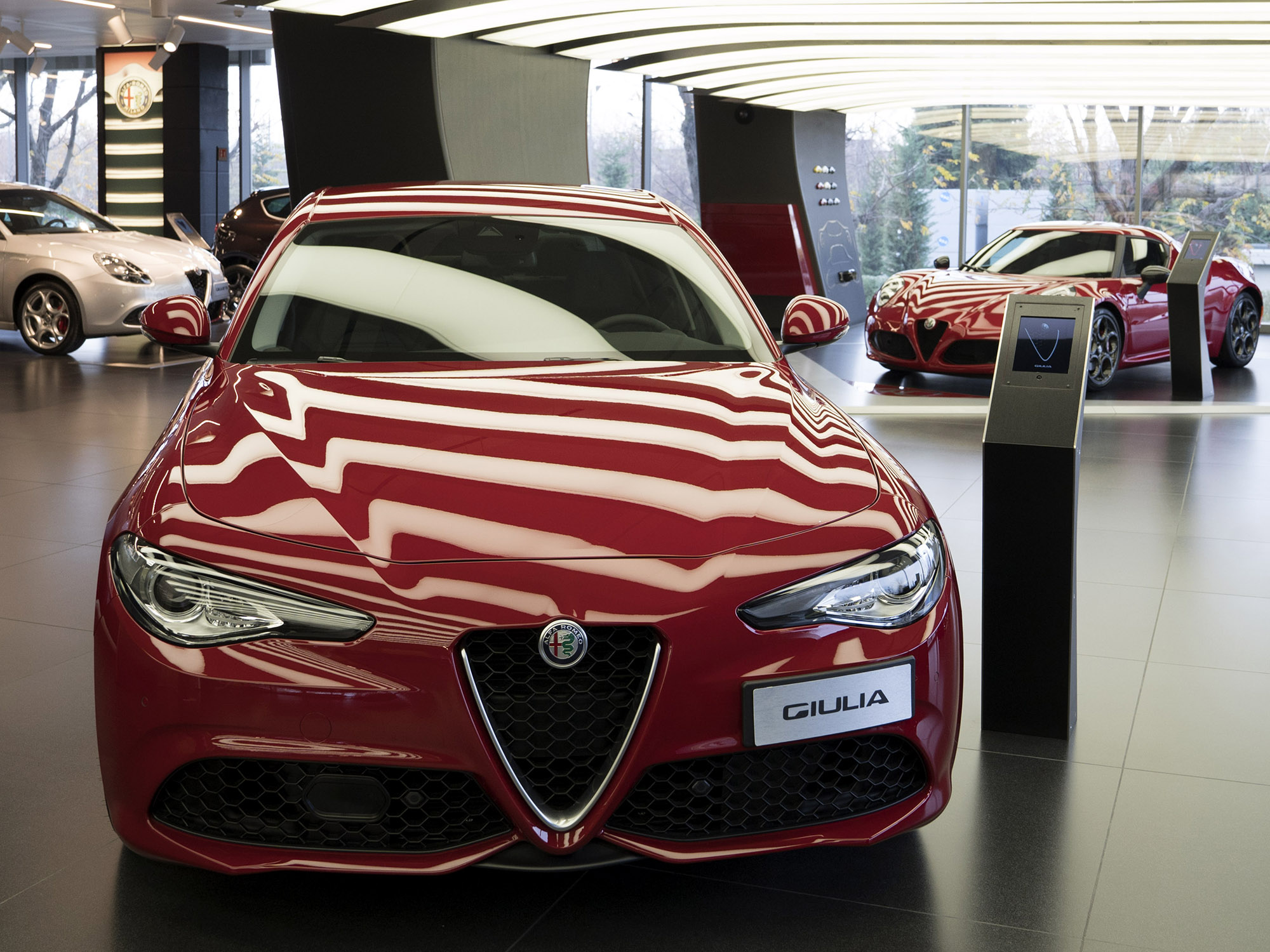Fiat Chrysler Automobiles NV plans to take a bigger bite out of the U.S. luxury market by filling up its Alfa Romeo brand’s model lineup.
As part of an ambitious
five-year plan that Sergio Marchionne unveiled Friday outside Turin, Italy, the chief executive revealed that Alfa Romeo has seven new models in development and a target to more than double worldwide sales. The brand boosted deliveries by 159 percent in the U.S. last month as other premium players posted slim gains.

Giulia Guadrifoglio
Photographer: Federico Bernini/Bloomberg
Alfa Romeo is Marchionne’s answer to U.S. luxury leaders Mercedes-Benz, BMW and Lexus, and he’s aiming to sell 400,000 vehicles globally by 2022. While the brand does a fraction of its German rivals’ volumes, it’s been gaining traction in the U.S. since the late 2016 introduction of the
Giulia. Deliveries of the sedan have doubled this year through May to almost 5,400 units, while sales of the Stelvio crossover that went on sale last June have topped 4,500.
“We’re conquesting,” said Gene Dorsal, general manager at dealer South Miami Alfa Romeo Fiat. “Some people are just tired of driving a BMW for the last eight years.”
Losing Steam
Mercedes-Benz led largely flat U.S. luxury sales in May
Source: Company statements

Daimler AG’s Mercedes eked out a sales gain of 0.3 percent in May, as sales of the GLA and GLC crossovers both increased by more than 70 percent and offset a rough month for the C-Class sedan and GLE crossover.
BMW AG’s namesake brand managed a 3.3 percent increase on the strength of the 5 Series sedan and X3 crossover.
Mercedes deliveries are now down 0.2 percent for the year, though the brand still leads BMW by almost 8,700 vehicles.
Even
Volkswagen AG’s Audi, which has defied a slowdown this year with torrid sales of its Q5 SUV and A4 sedan, posted a modest gain of 0.6 percent, its smallest of 2018.
Toyota Motor Corp.’s Lexus slipped for a third straight month, dragged down by a 12 percent drop in passenger-car deliveries.
